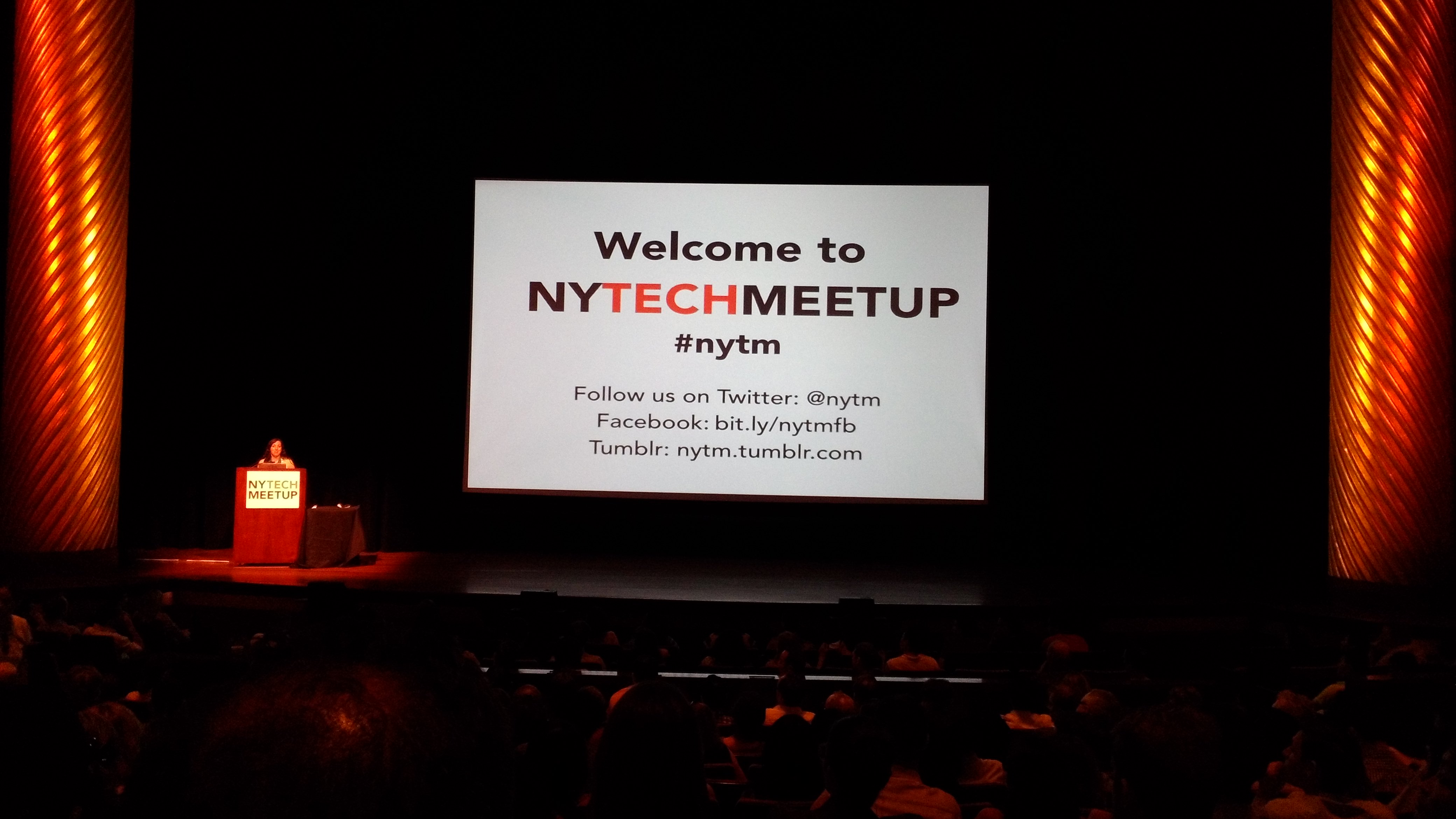July 2014 New York Tech Meetup (Part 3)

In part two of this series, I described the startups that presented in the second segment of July’s New York Tech Meetup: a licensable marketplace, digital photoframes, and peer-to-peer marketing for non-profits. This post will discuss the Hack of the Month and the final three startups that presented in the final segment of July’s NYTM.
Hack of the Month: The Satellite
The Satellite is a hugely ambitious project to create a real-time, photo-realistic visualization of the Earth as it would be viewed from the ISS The Satellite team aggregates land and weather data from satellites, weather stations, and other sources from around the world to render ultra high resolution visualization. The visualization will also include features such as clouds, shadows, lightning strikes, and even auroras. They plan to build a fully immersive viewing chamber to complete the experience. The team has split the rendering into a series of layers: one for land, another for shadows, etc. The most challenging layer so far has been clouds requiring alpha channels with generative particle systems and shaders. They’ve been using a game engine to perform the rendering.
Q&A (paraphrased)
- Where will the installation be built?
- The current plan is to build the installation in Brooklyn some time around 2015.
- What game engine do you use to render the visualization?
- Polycode (using C++ and OpenGL)
- Do you do any prerendering?
- Some more static layers (e.g. land masses) can be prerendered and will not change. However, most layers are rendered based on live data and are rendered on-the-fly.
- How realistic will the experience be?
- While this will never be quite the same as viewing the Earth from space, we intend to provide as realistic an experience as possible.
Sync Motion
With the recent popularity of personal activity trackers, it was only inevitable that someone would find a way to track gym workouts as well. Whereas devices such as the Fitbit and Jawbone UP can easily track metrics such as steps taken and floors climbed, they are unable to track stationary workouts such as bench presses, bicep curls, or kettlebell swings. Sync Motion tracks exactly these types of workouts. Using a wearable sensor like a Pebble Smartwatch in combination with sensors on the equipment itself, the Sync Motion technology can recognize what type of exercise the user is performing and the number of repetitions by matching the motion profiles of the wearable and the equipment.
Q&A (paraphrased)
- How can you distinguish between exercises with similar motion profiles?
- The sensors include an accelerometer and gyroscope to help reconstruct a 3D motion profile. Although some exercises may appear similar, they will have very different motion profiles.
- What other analytics can you track?
- We can track metrics such as calories burned, heart rate, and even help users improve their form and technique.
FieldLens
While modern development teams have a myriad of online project management and issue tracking tools from which to choose, teams in other industries still rely on tools developed before computers and mobile devices were ubiquitous. FieldLens aims to address this problem for the construction industry by providing issue tracking, file sharing, and communication tools custom tailored to the construction industry’s workflow. FieldLens provides features such as the ability to mark defects on a floor plan, share image, audio, and video notes; and mark locations with GPS.
Q&A (paraphrased)
- How do you track state and workflow?
- We provide project status and permissions for third-party contractors.
- Could people use this tool to manage event planning or security checks at events?
- We plan to focus on the construction industry first.
- How can you record safety concerns without necessarily escalating them too high?
- We provide “observations” which allow someone to note a potential security concern which can later be reviewed.
Picturelife
Picturelife offers an all-in-one photo management, online storage, search, and sharing service. Uniquely, they include facial recognition technology which enables users to search for photos with people in them. They also integrate with other photo sharing services such as Flikr.
Q&A (paraphrased)
- Do you support RAW format?
- Yes
- Can you tag photos?
- Yes
- Do you encrypt photos stored on your servers?
- No, but we provide SSL and authenticated links to content on our servers.
- How do you do facial recognition?
- We use OpenCV.
- Do you claim any copyrights on images uploaded to your service?
- No, your photos remain your own.